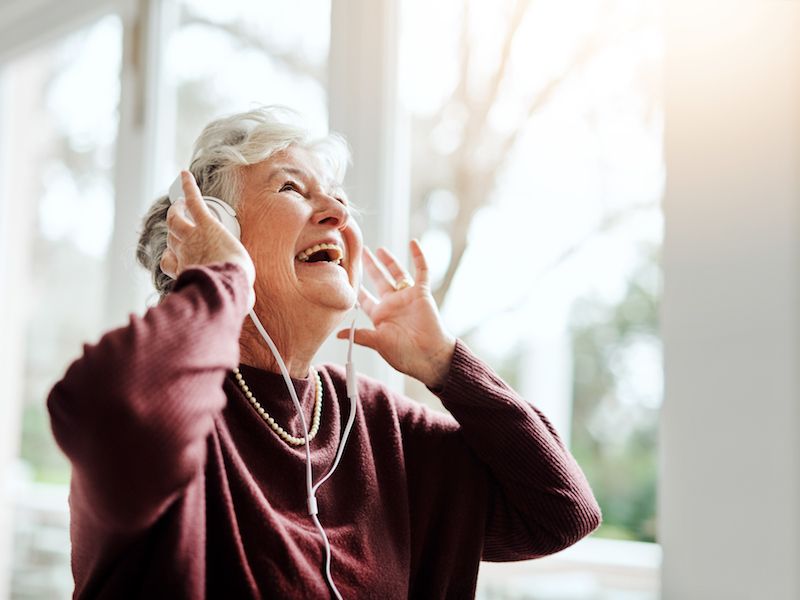
Individuals who work in loud settings such as construction sites or at heavy metal concerts are not the only ones affected by noise related hearing loss. It doesn’t even need to be work-related, recreation-related noise exposure can be harmful, also. The most prevalent type? Music, gaming, streaming video or anything that you would listen to through earbuds or headphones.
You may be alarmed to find out that a mobile device can get that loud. But these devices can achieve sustained volumes of over 105 dB, which is near the normal human pain threshold. This is the volume at which noise starts to literally hurt your ears. So what’s the solution for protecting your ears against volume related injury.
The volume level here is essential. An easy shorthand that’s widely suggested is the 60/60 rule: Listen with the volume at or below 60% for 60 minutes or less at a stretch (because the length of sound exposure matters, too).
Your Hearing Aids Can be Set up For Music
If you have hearing aids, you’re most likely streaming your mobile device right to your hearing aids, so be sure the volume is not too high or that you’re not attempting to drown out other sounds with your music. And there are much healthier ways to listen to music so ask us about that also. If you’re a musician or someone who loves music you might have recognized that most hearing aids are developed to improve the quality of voices…not necessarily music. We may be able to change the configuration to minimize noise and feedback while maximizing some frequency to enhance the quality of sound while listening to music.
How to Choose The Best Headphones
If you don’t wear hearing aids, there are a lot of options for purchasing headphones. There are some things to think about, even though it’s largely a matter of personal choice.
Headphones That go Over The Ears
Over the ear headphones are becoming popular again but you most likely won’t see the old foam covered speakers that used to come with a walkman. They have lots of choices in style and color, are frequently endorsed by celebrities, and can be surprisingly costly. And these headphones go over the entire ear stopping out noise, unlike those old foam ones.
Conventional wisdom is that these are safer than in-ear headphones because the source of the sound is further away from your eardrum. But because the speakers are larger they are usually capable of much higher volume. Noise cancellation can be a good thing as long as you’re not losing useful sounds such as an oncoming car. With that being said, because they cancel out outside noise, you can often reduce the volume of what you’re listening to so it’s not so loud that it will injure your hearing.
Earbuds
The normal earbuds are widely recognized for poor sound quality, but because they come with your phone a lot of people still use them. Plus, with newer models that lack a headphone jack, sticking with Apple’s earbuds can just be easier.
Earbuds also don’t block out sound so the downside is, you have a tendency to crank up the volume. It’s generally assumed that placing earbuds so close to your eardrum is the primary concern but it’s really the volume.
Occluding or Isolating Earbuds
More comfortable than regular earbuds, models with a round rubber tip are the choice of many people because they help obstruct outside sound. A seal that blocks outside sound from entering is formed by the rubber tip which molds to the shape of the ear. But these earbuds can also block out noises you might need to hear and volume is still the primary problem. And if you wear hearing aids, clearly these won’t work for you.
A number of pairs might need to be tested before you find headphones that meet your needs. Your expectations, acoustically, will differ depending on what type of usage you usually give them. Enjoying your music at a safe volume and finding headphones that help you do that is the key.
Don’t Cut Corners When it Comes to Your Hearing
Is it Safe, How Can I be Sure? There’s an app for that…If you have a smartphone, you can get the National Institute for Occupational Safety and Health’s free Sound Level Meter app. You can get different apps, but research has discovered that the accuracy of these other apps is hit-and-miss (in addition, for unknown reasons, Android-based apps have been shown to be less precise). That motivated NIOSH to develop their own app. You can measure external noise using the app, but sounds coming from your device’s speakers can also be measured, in other words, the actual volume of what’s being sent to your ears. It’s a little bit of effort, but taking these kinds of protective measures can help protect your ears.